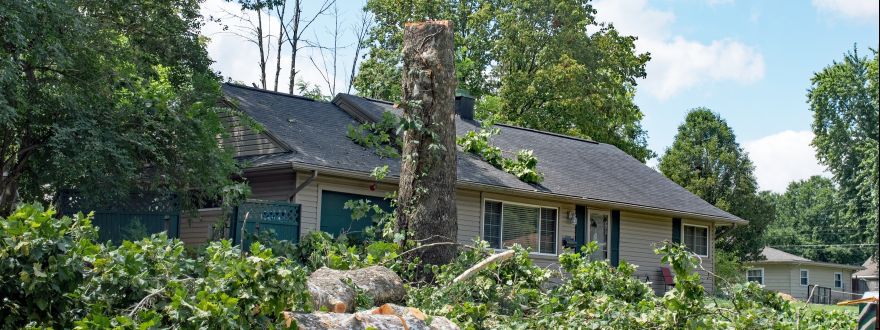
When most Floridians think about hurricane preparation, they picture sandbags, bottled water, and boarding up windows. But one often overlooked—and critically important—step is maintaining your yard, especially your trees and plants.
At Wells Insurance Agency, we’ve seen firsthand how simple landscaping decisions can reduce damage, lower insurance claims, and protect what matters most. Here’s why it’s important to maintain your plants before a storm—and how to do it effectively.
1. Trees Are the First to Fall
Overgrown limbs and weak branches become dangerous projectiles during hurricane-force winds. These can:
-
Shatter windows or damage roofs
-
Bring down power lines
-
Block access to roads and driveways
Tip: Schedule routine tree trimming, especially for trees close to your home or power lines. Work with a certified arborist for large or precarious trees.
2. Shrubs and Loose Debris Pose Hidden Risks
It’s not just trees—loose palm fronds, dead branches, and even garden tools can turn into wind-borne hazards.
Tip: Before hurricane season, do a sweep of your yard. Prune shrubs, remove dead limbs, and secure anything that could blow away.
3. Overgrown Plants Can Compromise Drainage
Thick landscaping or overgrown roots can block gutters, storm drains, or swales, leading to flooding or water damage around your property.
Tip: Clear drains and keep landscaping trimmed to ensure water flows away from your home—not toward it.
4. Insurance Claims Start Before the Storm
When a tree damages your home or property during a hurricane, insurance can help—but prevention may mean avoiding a claim altogether. Fewer claims help keep your rates lower over time and reduce the risk of policy non-renewal in today’s tightening market.
Pro Insight: We recommend documenting your maintenance. Snap photos before and after trimming, and keep receipts or invoices from any professional services. This strengthens your claim position if damage still occurs.
5. Smart Landscaping Can Reduce Long-Term Risk
Some plants and trees are more hurricane-resistant than others. Native species like live oaks and sabal palms tend to fare better in strong winds than shallow-rooted ornamentals.
Tip: If you’re redoing your landscape, talk to a local nursery or landscaping professional about wind-tolerant, native plants that support both safety and curb appeal.
Peace of Mind Starts with Preparation
Hurricane season isn’t just about stocking up on supplies—it’s about reducing risk before it strikes. Maintaining your yard is a small step that can make a big difference when it comes to safety and peace of mind.
If you have questions about your current coverage or want to review your wind and flood protection before the next storm, we’re here to help. At Wells Insurance Agency, we believe preparation is power.







